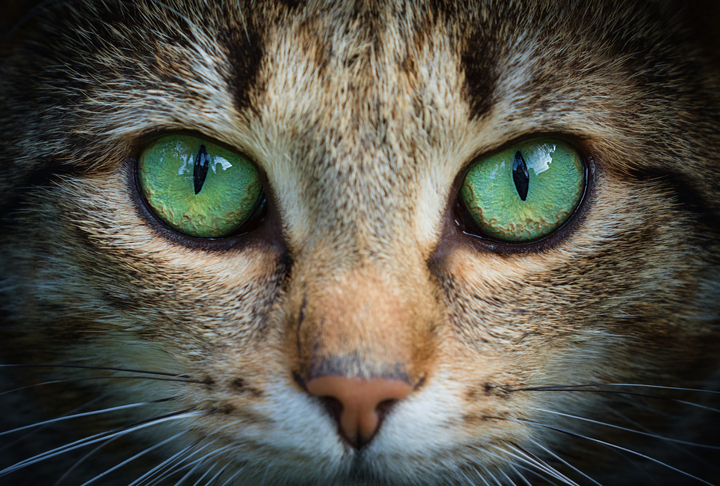Can Cats See in the Dark?
While we commonly wonder if cats can see in the dark, in fact, nothing can see in total darkness with the naked eye. Not even cats. If you’ve ever been in a tourist cave and the guide shut the lights off, you know that kind of darkness can’t be penetrated. Cats can however, see extraordinarily well in very low-light, light that humans cannot see in. Due to the construction of a cat’s eyes, their night vision makes humans vision seem very poor. A cat’s eyes are perfect for making the most of any light available to them. Prowling the night is easy for a cat, even with nothing but a sliver of moon to light the way. This article will explore cat’s vision and why they are masters of navigating the night.
How Do Their Eyes Work
To understand why cats have great night vision, you need to know how the cat’s eyes work. The retina of a cat’s eye has two kinds of photoreceptors. These cells, rods and cones, determine how they see. Cones allow detection of different colors. Rods are sensitive to light and are responsible for low-light vision. Cats also have what is called tapetum lucidum, a reflective layer between the lens and retina. This layer reflects light back through the retina and increases the usable light for the rods. Incidentally, this is what causes the glowing eyes when light hits them in the dark. The exception to this are cats with blue eyes that have abnormal cells in the tapetum lucidum. A blue-eyed cat’s eyes will glow red instead of the normal green. Because of this, it’s suspected that blue-eyed cats might not be able to see as well in the dark as cats with other eye colors.

Cats have another advantage in the shape of their eyes which has a large, curved cornea. The size allows more light to come into the eye. Additionally, the circular pupil also affects night vision. A cat’s elliptical, slit-like pupil is very sensitive to light and it’s capable of extreme dilation. But no matter how good the night vision, cats can only see well at about 20 feet. They are mid-sighted so anything beyond 20 feet appears unfocused. And they don’t have muscles to change the shape of their eyes so they have difficulty focusing on objects close to them. If you put something right in front of their nose, they won’t see it clearly. Instead, their whiskers will detect the object. However, their peripheral vision is 200 degrees wider than a humans which is 180 degrees.
Cats Are Colorblind
Because cats have many more rods, they don’t have as many cones. Cones are color receptors. Human color range is red, green, and blue. But cats, where color is concerned, are more like dogs than they are like people. Cats see a less color saturated world than people do. They mostly see shades of blue-violet, greenish-yellow, and gray. This means cats don’t see reds and oranges in true colors. They see them in browns and grays.
UV Light
Cats have another advantage. They can see more than people can. They can see UV light and that lets them see things like urine trails left by rodents. This aids them in low-light hunting.

Visual Aids
Great vision isn’t the only thing that helps cats navigate the night. Their whiskers and superior hearing also guide them through the darkness. Whiskers serve as touch receptors that allow cats to detect obstacles. They also have much better hearing than people. They hear higher frequencies and from a further distance than people can. This also helps them maneuver the darkness. Besides their whiskers and hearing, cats also rely on scent. The feline nose has twice the receptors as a human does. They also have a vomeronasal organ located in the roof of the mouth that helps them detect chemicals. Cats are thought to be built as night predators. However, cats are crepuscular, which means they are most active during the dawn and dusk.
Conclusion
While a cat may not be able to enjoy all the colors a person can, and may not be able to see as far as a person, their night vision is to be envied. Cats can see in very low light. Their hunting ability at night is hard to beat. Regardless, cats really aren’t nocturnal. They are most active at dusk and down, however, a house cat may roam or romp at any time throughout the night. They are famous for their night time antics. Once you understand how a cat’s eyes see and how they prowl the night, the mighty hunter is no longer a mystery.
At Central Broward Animal Hospital in Plantation, FL, we are ready to help you and your cat with whatever you may need! Call us at (954) 792-6323 to schedule an appointment or if you have any questions about your cat’s health!
